High-definition is an inevitable trend in the development of broadcasting and television industry technology, but the transition from standard-definition to high-definition requires a “transition periodâ€, that is, it must consider the working mode of high standard-definition in a period of time. At present, the receiving terminals of most TV audiences are still standard-defining terminals, and HD technology is basically mature in non-linear production or system solutions, and it is fully capable of full HD operation. For a TV station, if its internal editing system is ready or has begun to transition to full HD operation, but also needs to consider the SD audience's SD reception requirements, it means entering the “pre-HD eraâ€. This article refers to the address: http:// This is a "mixed era", an era of inheritance. We need to consider the historical environment compatible with SD, and we must prepare for the development of high-definition programs and technical transition. are you ready? 1. Situation and challenges From the current situation, 90% of TV stations in the US market began to produce high-definition programs, and 55% of broadcast programs were high-definition programs. In 2006, Japan began full-scale high-definition broadcasts, mainly for news and sports broadcasts. The production of high-definition programs in China almost doubles every year. A large number of program production companies are targeting the high-definition market in the future, and directly adopting high-definition devices for program production. The large-scale TV stations across the country have also tried to use high-definition devices to transition to high-definition channels and some programs. The stage of recording directly in HD format to reserve the source of the film. CCTV is also holding high the banner of high-definition, and will adopt full HD operation in the program production and broadcasting system of CCTV new site project. From the perspective of display devices, the current 16:9 size LCD or plasma flat panel TV has become the mainstream, and the old-fashioned CRT TV will also be phased out. In the past few years, the TV audience has been updating the TV set for several years. The living room of the family will be occupied by large and thin flat-panel TVs. More and more FULL HD TVs under 10,000 yuan will enter our field of vision. From the perspective of TV broadcasting technology, network, high definition and digital have always been the mainstream of the TV technology revolution. As early as a few years ago, well-known domestic and foreign manufacturers have launched equipment and solutions for networked high-definition production and broadcast, which has matured and has many practical cases. All of this seems to tell us the advent of the HD era, and it is faster than many people think, and it is an unavoidable development direction to turn to HD production. But it also brings many problems and challenges: â— Although the aspect ratio of domestic TV receiving terminals has changed from 4:3 to 16:9, in terms of proportion, SD 4:3 TV terminals still account for the vast majority, so HD channels must support high standard definition for a period of time. Simultaneous broadcasting; â— The procurement cost of HD production equipment and the time cost of production increased significantly compared with the standard definition, while the revenue of TV stations did not increase significantly. Although the sales of HD programs can provide certain advertising revenue, the main income of TV stations - advertising sales will not increase significantly. . Therefore, low-cost production is one of the key issues in HD promotion; â— A large number of post-production programs, historical materials, and included images are all SD materials. Unless all the screen content of the production program is completely self-selected, there will definitely be problems with high-standard-definition mixed production; â— Networked HD format In order to achieve better picture and lower bit rate, higher compression ratio and more complex compression algorithm are often used. What is the degradation of high-compression HD format after multiple generations of replication and multiple packaging? â— High-definition production requires higher network bit rate and storage capacity. Is the network architecture, technology and equipment that are very mature in SD environment applicable? â— With more advanced compression algorithms and higher bit rate, will the performance and stability of nonlinear editing be reduced, and can it still achieve the original application experience of standard definition? â— In HD environment, how should we choose the production rate, broadcast, storage archive, browsing rate and format? 2. Key technical issues in the “pre-HD era†High standard definition When it comes to the high-definition mixed editing and simulcasting issues, it is impossible to talk about the up-and-down transformation of Gao Biaoqing. High-definition conversion is actually a structural transformation of spatio-temporal sampling of video signals or files. That is, the transformation of the resolution and the combination thereof are realized in time and space. The transformation of the sampling structure is mainly through the interpolation and decimation filters on the spatial domain to achieve the rate and pixel transformation. Down-conversion, that is, high-definition conversion to standard definition, can be converted into low-resolution signal by high-resolution signal through decimation filtering; up-conversion, that is, standard-definition conversion to high-definition, can increase the sampling frequency while keeping the spectrum of the original video signal unchanged, and Interpolate the original signal. The signal processing flow of high-definition up-and-down conversion is shown in the following figure: The quality of the image up and down is determined by two factors: the deinterleaving (deinterlacing) algorithm and the resampling algorithm. The final quality depends on the type and precision of the algorithm chosen. In terms of up-conversion quality, we should pay more attention to the processing of noise and edges. The down-conversion should pay more attention to the spectrum and details. There are many types of de-interleaving algorithms applied to up-conversion, mainly linear filtering and non-linear filtering. Linear filtering is relatively simple, taking up less resources, but the effect is poor; nonlinear filtering is complex, the algorithm has high precision, and the storage and computing resources are occupied. More, but the effect is very good. The accuracy of the image resampling algorithm directly affects the final transform quality. There are currently two main ways of down-conversion: spatial domain transform and frequency domain transform. Spatial domain transformation: mainly re-sampling by ordinary linear or nonlinear interpolation of pixel points. The advantage is that the method is simple and fast, and the disadvantage is that the quality is not high. Due to the error in sampling accuracy (the lack of pixels, and the randomness of the sampled pixels), the image is blurred or has a smog-like feeling. At the same time, it is easy to produce flickering for materials with high brightness and high detail changes. In summary, the target image details are not enough, and the anti-flicker is not high. Frequency domain transformation: mainly through spectral analysis of the original image, the frequency of the target image is adjusted and modified accordingly, thereby achieving detail retention and enhancement, and also anti-flicking effect. The advantage of this method is that the SD image quality is stable and the effect is good. The disadvantage is that the speed is slow, but with the improvement of computer performance and the arrival of the multi-core era, the speed problem will no longer be the bottleneck. At present, Ocean's high-definition non-linear editing system adopts frequency domain down-conversion, and has realized ultra-real-time down-conversion on Intel's eight-core CPU platform. Up and down transformation mode Up-conversion, that is, the SD format is converted to HD format, there are the following three modes, as shown in the figure. Full width: The picture is cut vertically, the picture ratio is normal, but some of the picture content is lost; Pillar box: black borders on the left and right sides of the screen, retaining all the screen content, the screen ratio is normal; Stretch: Stretches the picture horizontally, retaining all the content of the picture, but the picture is distorted. The down conversion, that is, the HD format conversion to the SD format has the following three modes, as shown in the figure. Letter box: black borders on the upper and lower sides of the screen, retaining all the screen content, the screen ratio is normal, but the clarity is lost; Edge crop: The left and right sides of the screen are cut, the definition is good, the aspect ratio is normal, but some of the screen content is lost; Squeeze: The picture is compressed horizontally, retaining all the picture content, the definition is good, but the picture is distorted. In the "pre-HD era", high-definition programs are broadcast in high-definition channels and standard-definition channels. The program editing process also uses high-definition materials, which has the problem of continuous up-and-down conversion. After the SD is up-converted and then down-converted: During the production of the HD program, the historical data in the media asset system is used. These materials are SD format material, and the finished product is output in HD format. It may be broadcasted on the SD channel or sent to the SD channel after the HD program is down-converted. The following figure shows the various situations in which the SD material is continuously converted after being quoted by the HD program. It can be seen from the figure that if the up-and-down transformation scheme is not properly selected, the result of the image content loss or severe deformation will occur after the SD material is up-converted and down-converted. Therefore, choosing the appropriate up-and-down conversion strategy is crucial to ensure the broadcast effect of the program. High-definition down-conversion and then up-conversion mode actually means that the HD material is referenced by the standard-definition program, and then broadcasted to the HD channel or the finished program is converted and sent to the HD channel for broadcast. Of course, this situation is often avoided. The following figure shows the various possibilities of continuous conversion after the HD material is referenced by the SD program. 3. The strategy of “pre-HD era†Establish a high-definition compatible "low-cost production" system After adopting high-definition system, the overall cost of the system has indeed improved. However, the application of high-definition technology has not been so big for the overall benefit of TV stations. The “high-definition†trend of radio and television is irreversible, so how to establish high-definition in the high-definition stage. A compatible "low-cost production" system, how to achieve the goal of "high-definition operation, standardization cost" is the problem we need to consider first. System costs can be divided into two parts: equipment procurement costs and usage costs. After the "networking" of the broadcasting system, storage and network equipment occupy a large proportion of the system procurement cost, but from the development of the network and storage equipment in recent years, this part of the cost actually decreases. Since the rapid development of the domestic network system in 1998, the hard disk capacity has increased by 100 times. At that time, the high-capacity hard disk was 9 GB, but now it is 1 TB, and the price of each hard disk has decreased. The storage network has also evolved from 1GbFC to 4Gb. In terms of Ethernet, Gigabit has become the standard configuration of current computer terminals. The cost of using network and storage devices should be said to be the same as in the SD era, both in terms of its update cycle and from the perspective of operational maintenance. From standard definition to high definition, the overall cost increase is mainly reflected in the high-end and low-end non-linear equipment procurement costs. From the cost structure of the non-linear editing system, it can be seen that the cost of purchasing imported HD processing boards accounts for a large part of the total cost, and there is a huge gap between the procurement cost of HD boards and SD editing boards. The HD editing workstation is still expensive. At present, the domestic high-definition board has not been officially launched, which makes the cost of the non-linear machine still difficult to control. Therefore, the construction of a high-standard-definition production system, all with the use of imported high-definition board editing system for equipment replacement, the cost is high can be imagined. There are several solutions to the problem: the first is to wait for the launch of domestic HD boards. Of course, with the introduction of domestic HD boards, the price of imported boards will fall, and the price of HD non-linear equipment may be acceptable. The second is to reduce the overall price through the configuration of the solution. As the performance of multi-core CPUs and high-end GPUs continues to increase, the ability to handle high-definition bit rates is also increasing, and more and more pre-equipment devices use standards such as USB and 1394. The interface allows the computer to directly use the media's NATIVE file. The number of terminals with HD-SDI output interfaces is relatively reduced, so we can configure a large number of high-definition editing capabilities in a system without the need for board support. High-performance HD non-linear workstation, a small number of configurations using imported boards, workstations with HD-SDI output capability, collaborative editing and processing through the sharing capabilities of the network system. The broadcast system is currently a special case. The high-definition broadcast server is basically a monopoly of foreign products. The prices of various AV peripherals are also very high. It is almost inevitable that the procurement cost of equipment in the high-definition stage will be greatly increased. Let me talk about the high standard definition compatibility of the system. The overall compatibility of the system is mainly reflected in the compatibility of the nonlinear editing system and the ability of the transcoding system in the solution. There are many topics that can be studied here. Due to the incomplete expansion of the space, users and equipment purchasers need to pay attention to the following points: â— Non-linear editing system compatibility with encoding format, file format, system, etc. â— Real-time performance and quality of nonlinear editing systems when doing high-definition conversion â— Support for various transformation modes during output and preview â— Transcoding system efficiency and working mode According to the actual situation, the "up and down transformation strategy" is formulated. In the "pre-HD era", high-definition conversion is not only a simple technical problem, but actually involves the TV broadcast process, subtitle separation and broadcast, production efficiency, equipment cost and operating costs. Before determining the "up and down transformation" strategy within the station, we should prescribe the principle of up-and-down transformation: Principle 1: The original transmitted signal cannot be deformed, that is, the stretch deformation in the up-conversion and the squeeze deformation in the down-conversion cannot be used at the time of final transmission. The morphing function is often provided at the terminals of the TV audience; Principle 2: Fully fill the screen as much as possible to reduce the doubts and dissatisfaction of TV consumers, the TV screen is not full, the black strips occupy too large an area, and TV program consumers will think that they have been infringed on their rights; Principle 3: Consider the viewing habits of TV viewers. For example, the 16:9 widescreen movie uses the LETTER BOX mode. Although there are black bars on the top and bottom, the audience has basically accepted it. The black bar is also the best position for the original movie subtitles. The viewer with the flat TV can pass the TV 16:9 or The 14:9 deformation function gets better viewing results; Principle 4: It is not possible to influence the communication of content because of changes in the picture. This is similar to the first point. The above transformation uses the Full Width mode, and the problem of the beheading and chopping of the main body of the screen greatly affects the expression of the content of the screen; Principle 5: Economic principles. Equipment costs, operating costs, time costs, and costs of human resources inputs cannot be greatly improved due to high standard-definition hybrid production and up-and-down conversion; Principle 6: The principle of process simplification. The strategy developed cannot make the process too complicated and increase the original production process and habits because of the increase of the high-definition transformation link. Different transformation strategies have different technical requirements, and the resulting costs are also very different. We recommend that TV stations can formulate their own strategies based on their own understanding and actual situation to achieve the best results. Here are two examples of high-definition mixed broadcasts of news programs: High-standard-definition mixed broadcast strategy for news programs: â— News shooting can be used in high-definition equipment. In order to support SD full-frame output, news composition can directly use the 4:3 safety frame provided by the shooting device to place the main body of the screen in a safe frame; â— During the news production process, HD is directly used. The standard definition uses Pillar Box mode (both sides and black side). When editing and playback, you can switch between 16:9 or 4:3 mode to preview HD and SD broadcast effects. Subtitle editing is in the editing system. Implemented within the scope of the 4:3 safety frame provided; â— In the “pre-HD eraâ€, considering that the consumer is 4:3 as the main TV terminal, refer to Principle 2 above, that is, the principle of full screen of the consumer. When the HD channel is broadcast, the overall content does not change. When using the 16:9 HDTV, the referenced SD screen appears black. When the SD channel is broadcast, the Edge Crop mode is used, and the SD picture is full and the original pixels are not lost. The strategy of high-definition mixed production and broadcasting of integrated production programs: â— The recording of the program is completely captured by high-definition equipment, and the composition mode of 16:9; â— During the post-editing process, if the same HD material is used directly, the SD material is in Full Width mode, and the subtitle editing is completed in the 16:9 format. â— The high-definition program does not change when it is broadcast on the HD channel, and the HDTV viewing effect is full frame. When the SD channel is simulcast, refer to Principle 3 above, which considers the viewer's viewing habits for movies, TV, documentaries, etc., and uses the LETTER BOX mode to change. This is cut off for the upper and lower sides of the standard definition historical data quoted in the HD program. 4, our solution The “pre-HD era†brings not only challenges, but also a great opportunity to seek development and change. As the main propaganda window of spiritual civilization in China, radio and television organizations at all levels should seize this opportunity for development, keep pace with the times, and be prepared in all aspects. China currently has a large number of small and medium-sized TV stations. As an important part of China's radio and television industry, they face the same challenges from all aspects of national and provincial TV stations with strong capital and strong technical strength: market competition is intensifying and new. The form of media continues to emerge, and viewers are increasingly demanding the content and quality of the show. How to transform the production business platform into a systematic and networked way? How to reduce the total cost of ownership of the business platform and improve the production efficiency of the business platform? How to effectively protect the existing investment in the transition from SD to HD? These are not allowed for small and medium-sized TV stations. Do not consider the issue. As a leading company in China's broadcasting industry, Beijing Zhongke Dayang Technology Development Co., Ltd. understands the huge challenges faced by small and medium-sized TV stations, and also notices the various transformation efforts made by small and medium-sized TV stations in response to the challenges. Practical experience and deep understanding of high-definition technology, for the small and medium-sized TV users to launch the first domestic high-definition integrated solution product - DPower HD. The off-grid inverter is an inverter used in off-grid solar power generation systems. Its main function is to convert the direct current generated by solar panels into alternating current to meet the power demand in off-grid environments, such as in remote areas, In camping, boats, or moving vehicles. off grid solar inverter,off grid 3 phase inverter, off grid solar power inverter, off grid solar inverter 5kw, off grid solar inverters for sale Ningbo Autrends International Trade Co., Ltd. , https://www.china-energystorage.com
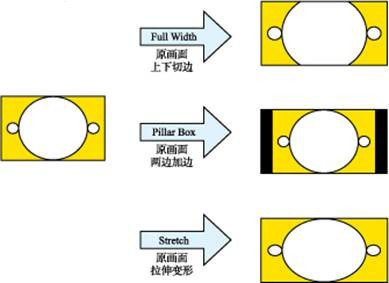
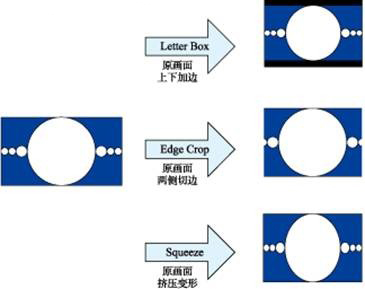
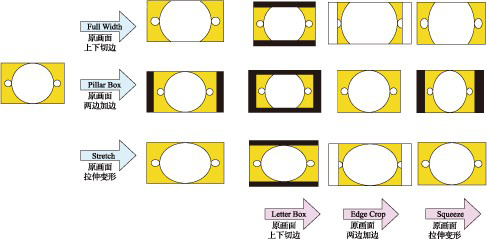

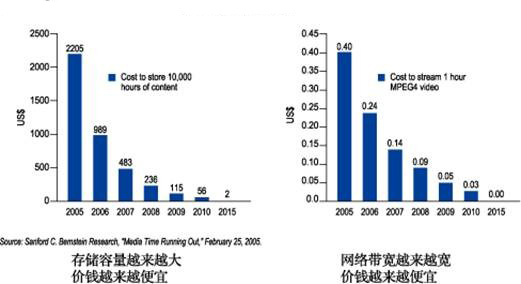
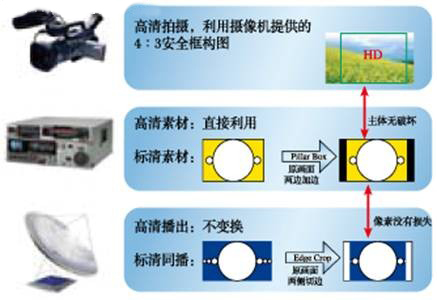
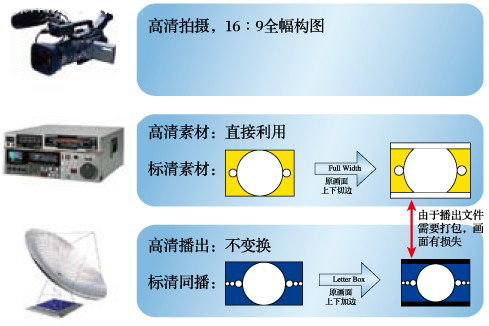
Main effect:
Converts the direct current generated by solar panels into alternating current to supply the power needs of homes, mobile devices, or other electrical appliances.
Off-grid inverters are usually equipped with battery energy storage systems, which store excess power so that they can continue to supply power when the solar panels cannot generate enough power.
Differences from On-Grid Inverter:
Connection method: Off-grid inverter is an inverter used in the off-grid system and does not need to be connected to the grid. They are often used in places where there is no access to the grid, such as remote areas, wild camping, or outlying islands.
Grid requirements: Unlike on-grid inverters, off-grid inverters do not need to meet grid requirements and standards because they are not connected to the grid. They can operate independently and can be adapted to different off-grid environments.
Self-sufficiency: The off-grid inverter is equipped with a battery energy storage system, which can store excess electricity so that it can continue to supply electricity when the solar panels are unable to generate electricity. This makes the off-grid system self-sufficient and not dependent on an external grid for power.
Application scenarios: Off-grid inverters are widely used in remote areas, camping, ships, mobile vehicles, and some special-purpose scenarios. On the other hand, grid-connected inverters are mainly used in home, commercial, and industrial photovoltaic power generation systems connected to the grid.
In general, the main function of the off-grid inverter is to convert the direct current generated by the solar panels into alternating current to meet the power demand in the off-grid environment and achieve self-sufficiency by being equipped with a battery energy storage system. In contrast, on-grid inverters connected to the grid are mainly used to integrate solar power into the grid, realize the interaction between solar power and the grid, and comply with the requirements and standards of the grid.